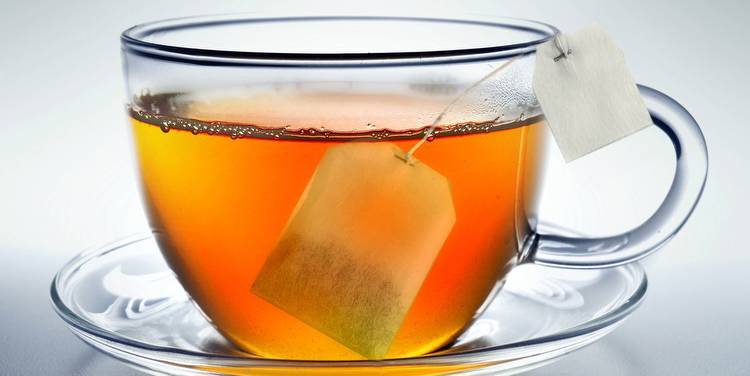Microplastics in Tea Study

As the temperatures cool down, the odds rise that you’ll want to relax with a hot drink. If hot tea is your go-to postride pick-me-up, you may be worried about the news making the rounds that you might be sipping some microplastics along with your brew.
The news comes from a recent studyEnvironmental Science & Technology, whichfound that steeping a PET plastic or nylon teabag at brewing temperature (203 degrees Fahrenheit), released 11.6 billion microplastics and 3.1 billion nanoplastics into a single cup of tea.
That comes on the heels of other research from earlier this year: A meta-analysis from Newcastle Universityand the World Wildlife Fund concluded that we’re eating about a credit card’s worth of plastic each week.
This credit-card amount is based on what is known about the levels of microplastics in things like beer, water, honey, and seafood, as well as in the air, Susanne Brander, Ph.D., assistant professor in the department of environmental and molecular toxicology at Oregon State University, told Bicycling.
So should you toss out your teabags? We tapped a microplastics expert and a toxicologist to find out what you need to know.
What are microplastics, and where are they found?
Microplastics are any debris made of synthetic polymers—chemical compounds that make up manufactured plastics—that measure less than 5 millimeters in any dimension; they can be pellets, fibers, or fragments.
Disposable single-use plastics from products that can’t be recycled, such as plastic tea bags, straws and cups, end up in landfills or are littered. Then, they make their way into the air or the water, where they can affect sea creatures.
Much of what we find in water, sediment, air, and animals is in the form of fibers, according to Brander.
While microplastics are in everything from food and drink to clothing and waste, a recent study showed that the highest route of exposure was from the air, from tiny particles or fibers we inhale or ingest unknowingly.
Are microplastics harmful?
There’s not a lot of solid evidence out there just yet on what consumption of microplastics means to our health: Research is still ongoing as to whether these chemicals leach out in an appreciable amount that could have a health effect, Brander says.
Most of the information we have comes from research on aquatic animals, Brander explains—and we do know that they can be harmed by ingesting plastics.
In some organisms, microplastics been shown to cause damage to cells, and in some fish, they can affect things like immune response, the ability to acquire oxygen, and swimming behavior.
Research on effects on humans is really just beginning.
“But plastics are synthetic and can contain harmful chemicals, so reducing our exposure is probably best,” says Brander. “We just don’t know how much if any is harmful to humans yet.”
Some research suggests that ingesting these microplastics may be harmful to the gut microbiome, though it’s unclear what the effects may be, or how much microplastic you would have to consume to be at risk. Other research, though, suggests that human digestion takes care of microplastics you ingest, disposing of more than 90 percent of those that are ingested as waste.
And why the sudden worry? It may be due to recent research or more discovery of plastics in the stomachs of marine organisms, suggests Jamie DeWitt, Ph.D., associate professor in the department of pharmacology and toxicology at East Carolina University, prompting an interest on how these microplastics are affecting humans, whether consumed from fish or other sources.
Should you worry about ingesting microplastics?
Chances are, your tea bags are made of paper rather than plastic—if you have a plastic tea bag, you’ll be able to clearly see the leaves through the bag. Paper teabags are not a concern for microplastics, but if you want to be extra cautious, Brander suggests using looseleaf tea that comes in a metal canister.
So for tea, you may not really need to worry about it, but what about elsewhere in your everyday life?
“In general, using less plastic is better for the environment and may also be better for us,” Brander says.
Since microplastics are everywhere, even in the air, it makes avoiding them tricky, Brander explains. But what you can focus on is reducing your plastic footprint so there is less of it available in the environment.
In general, DeWitte suggests evaluating if plastics are essential for everyday life or can some be replaced—like swapping out plastic grocery bags for reusable ones.
Buying in bulk, using non-plastic containers, filling up reusable travel mugs with water or coffee instead of using disposable cups and bottles, can help, too. “Small changes can lead to big positive impacts,” Brander says.
Digital EditorJordan Smith is a writer and editor with over 5 years of experience reporting on health and fitness news and trends. She is a published author, studying for her personal trainer certification, and over the past year became an unintentional Coronavirus expert. She has previously worked at Health, Inc., and 605 Magazine and was the editor-in-chief of her collegiate newspaper. Her love of all things outdoors came from growing up in the Black Hills of South Dakota.



































